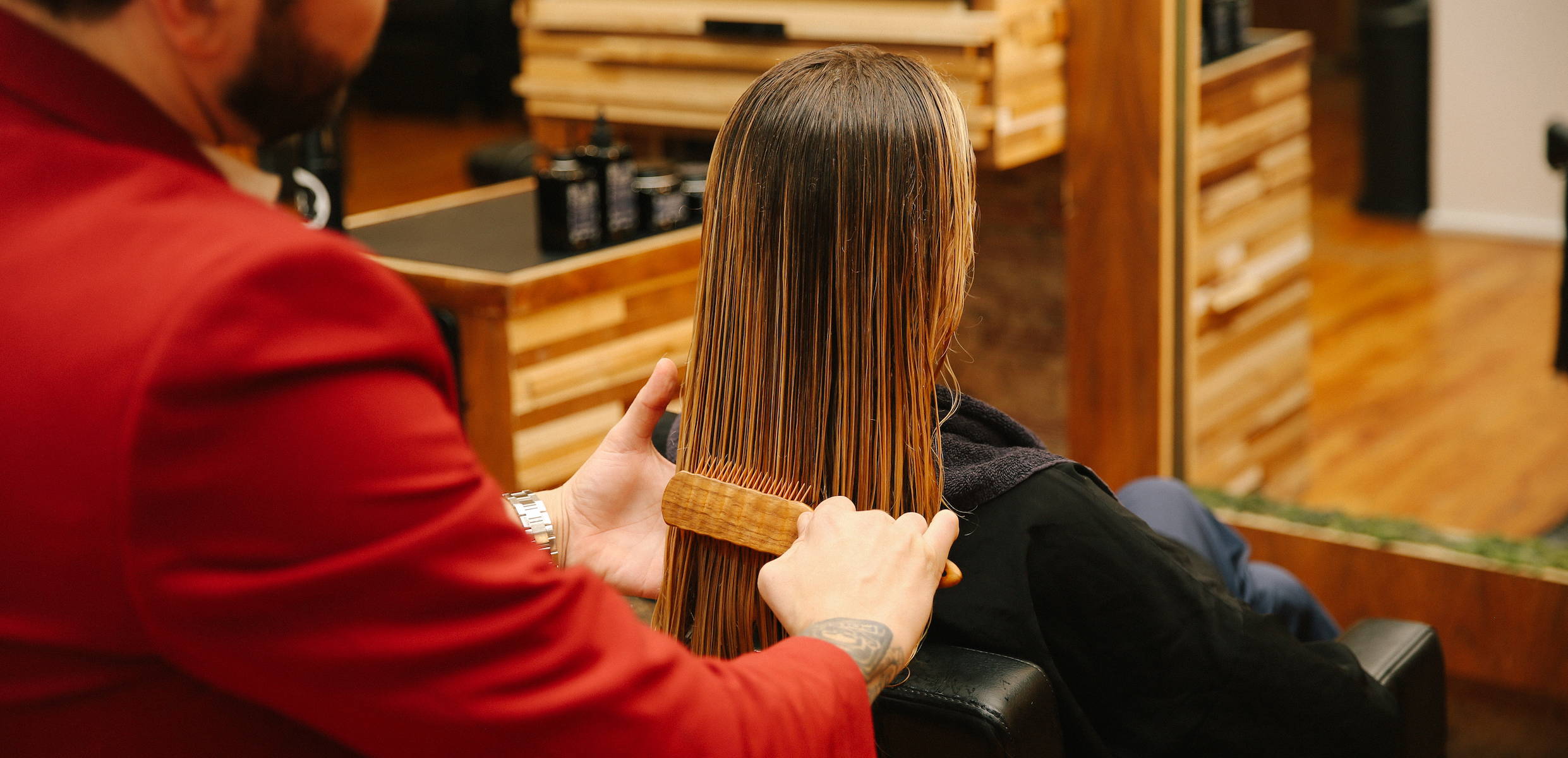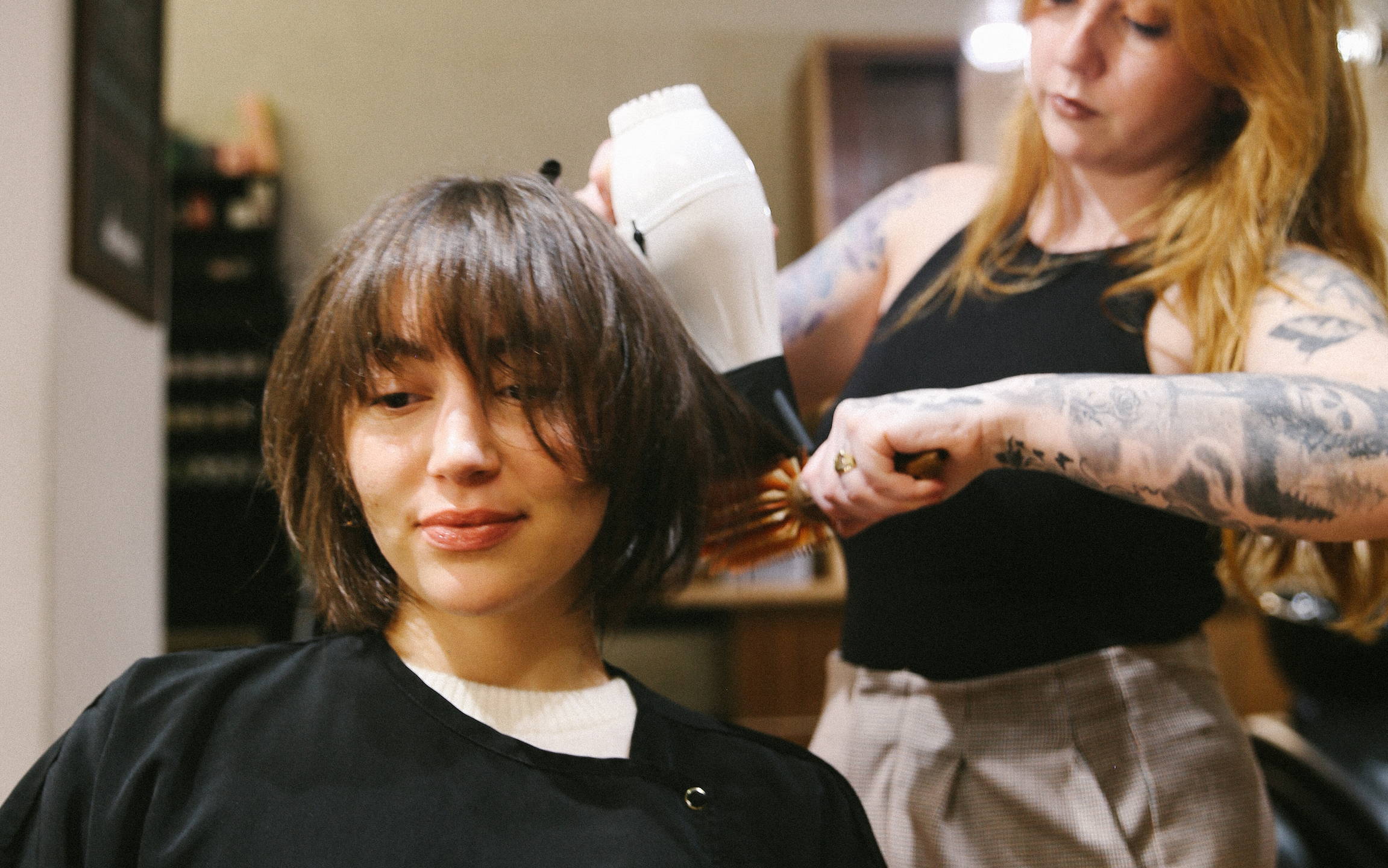Free Carbon Neutral Shipping On Orders $75+, Plus Free Samples!
Buy Now and Pay Later in 4-interest free installments with Klarna
Free Carbon Neutral Shipping On Orders $75+, Plus Free Samples!
Buy Now and Pay Later in 4-interest free installments with Klarna
Rendre la beauté durable
We Are Circular
Ajouter une description, des images et des liens au méga menu
Une colonne sans paramètres peut être utilisée pour créer un espace.
Lien vers vos collections, vos ventes et même des liens externes.
Tried & True Favorites to Protect Your Salon Color
There’s an age-old hair care discourse when it comes to healthy hair. For centuries, people have debated brushing vs combing hair to untangle knots, reduce frizz, and maintain the overall health of their hair strands. Combs and brushes seemingly do the same thing, so what’s the difference? And is it better to use a comb or brush? We’re tackling this age old debate and breaking down the benefits of the hair brush vs comb, including the best for all hair types and pro tips for combing and brushing hair, ahead!
The structure of your hair plays a crucial role in its health and appearance. Understanding the basic anatomy of a hair strand is essential to finding your best hair care practices, and this includes using a brush vs comb. Hair is composed of three layers: the cuticle, cortex, and medulla. The cuticle is the hair’s outermost layer which has shingle or scale-like cells that overlap. These cells work defensively to prevent damage to the hair’s inner structure. The middle structure includes the cortex which provides strength, color and texture of the hair. The innermost structure is the medulla layer which is only present in large thick hair strands. So the thicker the strand, the stronger it is against external aggressors, like brushing vs combing hair too aggressively.

There are several different types of hairbrushes available, each designed to cater to different hair types, textures, and styling needs. Choosing the right brush is essential for achieving optimal hair health and your best hairstyles. These are the most common the types of brushes:
Paddle brushes have a wide, flat surface with densely packed bristles. They’re ideal for detangling and smoothing medium to long hair. Paddle brushes are great for straightening hair and creating a sleek look.
Round brushes come in various sizes and are commonly used for blow-drying your hair. Round brushes work for most hair types and are excellent for creating bouncy curls and adding body to the hair.
Detangling brushes have flexible bristles that gently glide through tangles without causing excessive breakage or damage. They’re good for all hair types, especially those with thick or curly hair prone to knots. So is it better to brush or comb curly hair? It depends on the tool. If you choose a brush, make sure it’s a detangling brush.
Boar bristle brushes are made from natural boar hairs and are known for their ability to distribute the scalp's natural oils along the hair shaft. They add shine and reduce frizz, making them ideal for people with dry or damaged hair.
Hair combs come in different shapes and designs, each serving different purposes, hair types and needs. From detangling knots to creating precise hairstyles, choosing the right hair comb can make a major difference in maintaining healthy hair. These are the most popular types of hair combs:
Wide-toothed combs have widely spaced teeth, making them ideal for detangling wet or dry hair. They are gentle on the hair and help reduce breakage, making them particularly great if you have thick or curly hair prone to knots.
Fine-toothed combs have closely spaced teeth and are excellent for styling and creating more precise hairstyles. They work well with straight or fine hair, as they can smooth the hair for a sleek look. So is it better to brush or comb thin hair? We say stick with a comb for more gentle detangling.
These types of combs are made from metals, like stainless steel or aluminum. While not as common as plastic or wooden combs, they can be valuable additions to your hair care routine, especially for specific hair types and styling needs.
Plastic combs are made from various types of plastic materials and come in varying teeth spacing options. Plastic combs offer several advantages and are popular choices for everyday hair care routines and things like back-combing.
The benefits of using a comb vs brush go beyond merely detangling knots. The act of combing your hair is a powerful ritual that can boost the overall health and appearance of your scalp and hair. Whether you have straight, wavy, or curly hair, combing is an essential part of any good hair care routine. Incorporating this essential practice daily has the following benefits:
One of the primary benefits of combing is its ability to gently detangle knots and snarls in the hair. Using a wide-toothed comb or a specialized detangling comb, you can work through stubborn tangles without causing excessive breakage or damage.
When used correctly, combs can minimize hair breakage. By starting at the ends of the hair and working your way up to the roots, you reduce the tension on the hair, making it less susceptible to breakage.
Combing can contribute to improving your hair texture, especially if you have straight or slightly wavy hair. Regular combing can help the hair lay flatter and look smoother, giving it a sleek and polished appearance.
If you have straight hair, combing is particularly beneficial. It helps maintain the natural flow and alignment of your hair strands, preventing them from becoming tangled or disheveled. A comb is also an essential tool for parting your hair.
Combing allows for the even distribution of your hair care products, like leave-in conditioners and serums. This ensures that the products reach every strand, providing better overall results.
Combing can help reduce static electricity in the hair, which is especially useful in dry or winter climates. Additionally, it can help tame frizz by smoothing the hair cuticle.
If you brush your hair, there are advantages that go beyond just untangling and styling. This simple hair care practice can improve the health, appearance, and manageability of your strands. Whether you have long, short, thick, or fine hair, incorporating brushing into your daily routine can yield the following results:
One of the primary benefits of brushing is its ability to smooth frizzy hair. When you brush your hair, especially with natural bristle brushes, it helps distribute the natural oils from your scalp throughout the hair shaft.

Brushing assists in distributing sebum, the natural oil produced by the scalp, along the length of the hair. This natural conditioning helps to moisturize and nourish the hair, keeping it healthy and hydrated.
Especially if you have thick or unruly hair, brushing can be a game-changer. It helps detangle and smoothen the hair, making it more manageable and easier to style.
Brushing not only benefits the hair but also the scalp. The gentle massaging action of the brush stimulates blood circulation, promoting a healthier scalp environment for hair growth.
When it comes to combs and brushes, the best tool to detangle your strands depends on your hair type. So do you need a comb and a brush? You don’t necessarily need both, but with so many different kinds of each available, there are benefits to having a brush and a comb. To speak with an expert about your hair, or try a trendy new hairstyle, use our salon locator to book an appointment near you. Be good to your strands and use only high quality, gentle formulas in your hair care routine, like the ones from Davines. Our products are free of harmful toxins, use many natural ingredients, and are made with renewable energy and packaging that minimizes the environmental impact.
by Morgan Hanson, featured contributor
S’abonner pour rester à l’affut des ventes et promotions, les lancements de nouveaux produits et bien plus…
Abonnez-vous à notre newsletter pour bénificier de la livraison gratuite sur votre première commande.
La soumission de ce formulaire confirme que vous acceptez de recevoir les avis de lancement, les promotions et les nouvelles marketing de Davines North America Inc. par courriel.



Laisser un commentaire
Les commentaires sont approuvés avant leur publication.